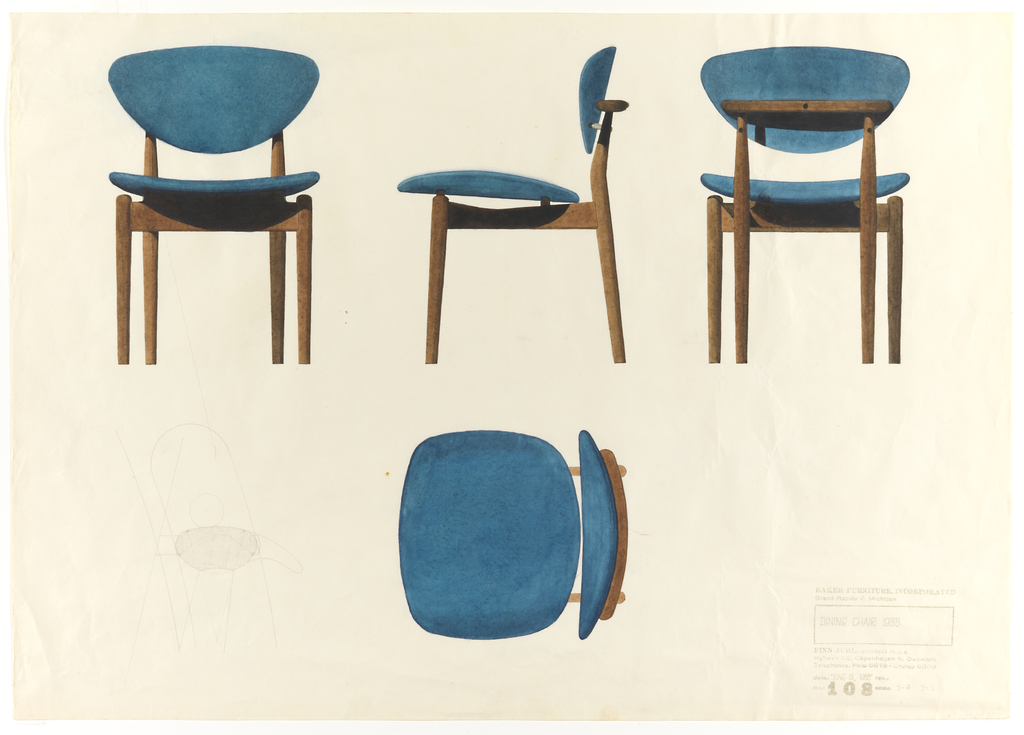In 1951, Danish architect and designer Finn Juhl brought Danish Modernism to forefront of American consciousness. He did so with his interior for the “Good Design” Exhibition in Chicago, as well his design for the Trusteeship Council Chamber at the UN headquarters in New York, which he completed the following year. However, Juhl’s sculptural forms, praised as the height of modern design, were not only placed on display in prominent American arenas but were also integrated into American homes, bringing European design to the average American consumer.
This fluid integration was product of American mass production. In 1950, Juhl received a commission from Baker Furniture Inc. in Grand Rapids, MI, to create a series of furniture designs that would appeal to the younger market. The Baker line, known as Baker Modern, was introduced in June 1951, and came to consist of twenty-four pieces, including desks, coffee tables, sideboards, bedside tables, sofas, armchairs, as well as side chairs, and dining chairs, as depicted in the 1955 drawing.
Danish Modernism began with designer Kaare Klint, who embraced the Bauhaus design aesthetic and passed the ideology onto his students, who, throughout the 1940s and 1950s, reinterpreted the movement in a variety of ways, but consistently produced variations on minimalist wood furniture. Juhl in particular became known for the sculptural quality of his designs, whose forms may be traced back to his interest in abstract art.
Juhl’s designs were also distinguished by their seeming weightlessness. This weightlessness was achieved by separating the back and seat of the chair, exposing the wooden frame. Such is the technique used in Juhl’s design for the dining chair. Despite their light look, the finished product served as a sturdy piece of furniture, as advertised by Baker. Juhl’s contract stipulated that Baker would produce some of the models which had already been produced in limited quantity by the Danish cabinet maker, and Juhl’s initial partner, Niels Vodder.
For example, Juhl made some slight alternations from the original design, streamlining the frame of the chair, eradicating a curve in two wooden beams which held up the back rest, and even editing details as small the amount of bolts which connected the back rest to the frame. These Baker chairs were made of English harewood, American walnut, and white rock maple, preserved with a special finish in order to preserve the natural effect of the wood and while protecting the wood from exposure. By using cheaper wood than the Vodder chair, and by appealing to the daily wear and tear of the new, modern, nuclear American family, as promoted by Baker, Juhl’s designs were able to make the leap from the international stage to the 1950s American home successfully.
